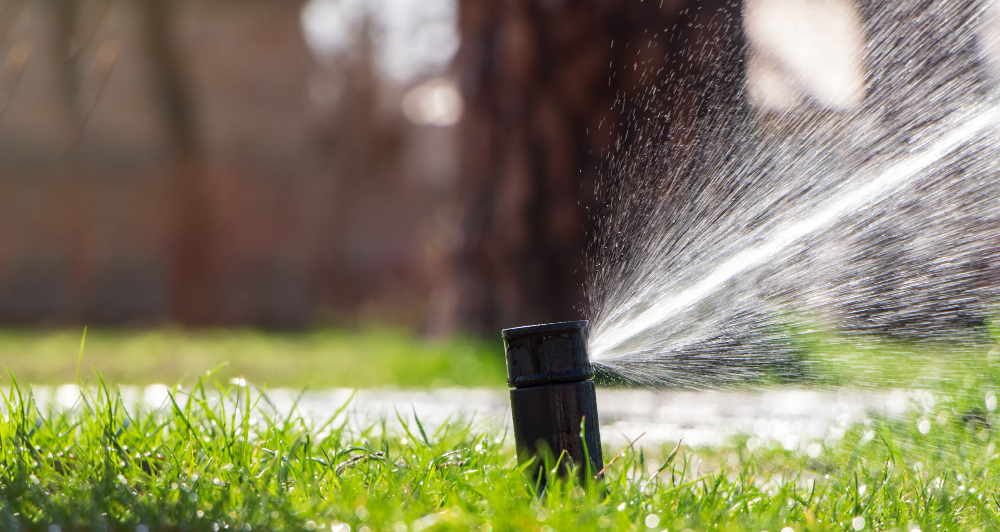
In an automatic irrigation system, water reaches the grass through a variety of sprinklers or drip lines and a controller. This is an extremely convenient way to get a beautiful and well-maintained lawn.
Signals from the controller are transmitted to solenoid valves, which opens or closes the water supply to individual sections. They are placed in such a way that they do not flood structures on which we would not like to see water, such as a terrace, and at the same time provide all plants with adequate moisture. It is also possible to adjust the direction of irrigation and the maximum range of operation.
First, as much water as needed reaches the plants, which saves money, but also time. Secondly, your lawn will not dry out if you forget to water it or if you want to go somewhere – you can easily do so. The obvious disadvantages, however, is the high price of materials and installation. In addition, the irrigation system is best to set up in the garden not yet prepared, because you have to reckon with the need to make excavations for supply pipes.
There are many options available on the market, but not all will be suitable for watering the lawn. We must reckon with the idea that the larger the area, the greater the problems associated with it. Micro-sprinklers (static sprinklers) irrigate a circle or part of a circle with a radius of 1.5 m to 4 m, so they will not be ideal for our needs, unless we care about such a small area. Drip irrigation is recommended for small areas. Therefore, for lawns, fixed sprinklers will be better.
They have a range of up to 10 m, they are used to irrigate large areas. There are two types: pop-up sprinklers and non- pop-up sprinklers. They differ from each other in the way they do their job, but also in the extent of the area they are able to irrigate.

The former are hidden below the surface of the ground, extending to different heights during operation. High-profile sprinklers are recommended for shrub clusters and flowerbeds, while low-profile sprinklers are ideal for lawns. Non-emerging ones are relatively inexpensive and durable, but are not suitable for lawns.
Their range of operation is from 0° to 360°, they are usually used for watering large lawns. More efficient watering have models with a turbine mechanism, and they work quieter than those with a hammer mechanism.
For the irrigation system to work automatically, you need a controller. Depending on the type of device, you can set on it, for example, the time and duration of watering, days of the week and the sequence of switching on and off individual sections of watering. Some models have displays, others are less technologically developed. Many controllers can work with a rain sensor (the system shuts off when rain arrives).
How does the design of such a system look like? A plot plan is drawn along with the elements that you do not want to be watered (such as buildings, paths). Then you divide the lawn into sections, where the sprinklers are located. Separately must be connected sections with drip line, if you set one up. The cost for 1000 m² installation ranges from 10000 PLN to 15000 PLN for materials and installation by professionals.
>> See also: Irrigation control by phone
Automatic lawn irrigation helps to maintain a perfect lawn, even distribution of water, time and money. The cost of its installation is not low, but the number of advantages of this solution far outweighs the number of disadvantages.